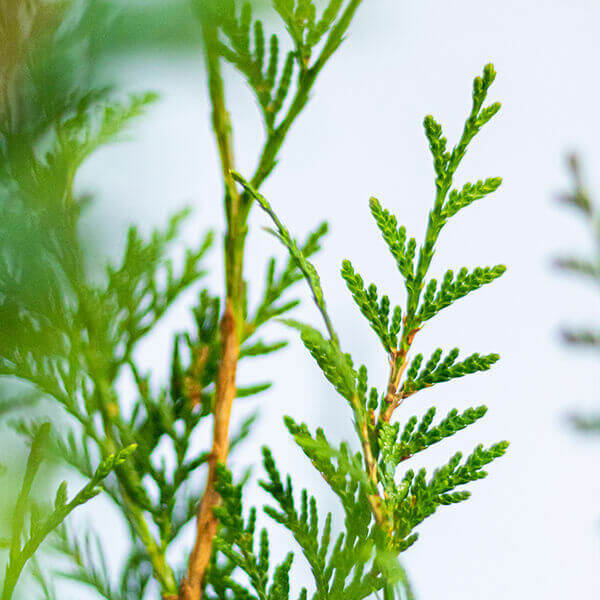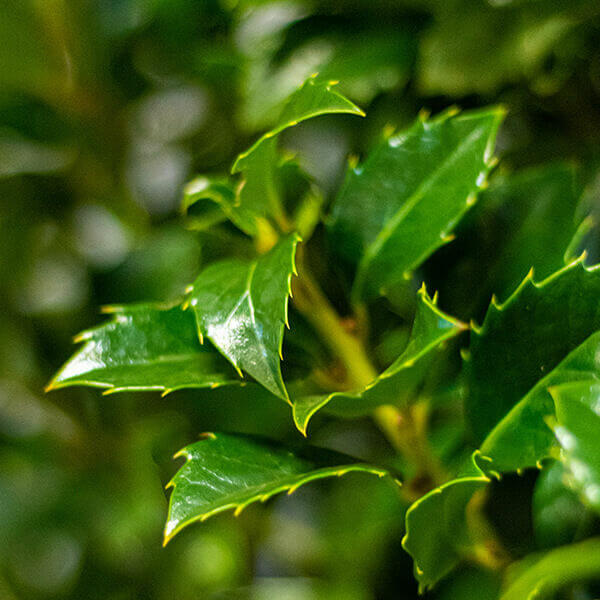Best Hedging Plants For Fast Growth
Enhance your garden's allure with rich hedge varieties such as Yew (Taxus), Thuja, Laurel, Photinia, and Bamboo, commemorated for their structural stability and environmental advantages.
Yew and Thuja provide evergreen coverage and winter season resilience, while Laurel provides quick growth and broad, aromatic leaves.
Photinia includes seasonal charm with its dynamic red foliage, and Bamboo provides a low-maintenance, serene ambiance.
These hedges enhance air quality, lower noise, and produce tranquil, personal spaces.
Appropriate planting, spacing, and upkeep make sure vigorous growth and environmental consistency.
Explore how these lush ranges can raise your garden's appeal and well-being.
Key Takeaways
Transform Your Garden With Lush Hedge Ranges
- Select Yew for its dense, evergreen growth and unrivaled longevity.
- Select Laurel for its fast development and broad leaves, ensuring fast privacy.
- Pick Photinia for its dynamic seasonal foliage, which turns a striking dark red.
- Make use of Bamboo for a low-maintenance, winter-hardy hedge with aesthetic appeal.
- Area plants 2-3 per meter and prune frequently for optimum development and health.
Popular Hedge Plants
When changing a garden with lavish hedge varieties, it's vital to consider popular hedge plants such as Yew, Thuja, Laurel, and Photinia due to their unique characteristics and benefits.
Yew (Taxus) is highly esteemed for its longevity and dense, green growth, making it a prime choice for enduring landscapes.
Thuja is kept in mind for its evergreen foliage and robust winter season strength.
Photinia includes seasonal vibrancy with red leaves that darken gradually, developing vibrant visual appeal.
Laurel uses quick development and aromatic, broad leaves, perfect for fast personal privacy.
Furthermore, Bamboo is an outstanding choice for ambiance, offering a low-maintenance, winter-hardy alternative that boosts the garden's visual with its stylish, swaying canes.
These choices deal with a range of horticultural needs and preferences.
Advantages of Garden Hedges
Garden hedges provide a wide range of advantages, making them a valuable addition to any landscape. These natural barriers are economical to execute and provide significant wind defense, improving air flow and contributing to sound reduction. The thick foliage of hedges like Thuja and Beech guarantees privacy by blocking exposure, creating a tranquil and secluded environment.
Hedges likewise play a vital role in microclimate guideline, offering a steady environment that promotes plant development and reduces temperature level changes. Their intricate leaf structures filter contaminants, enhancing air quality and contributing to a much healthier garden community.
Additionally, hedges master sound reduction, taking in and deflecting acoustic waves to lower ambient noise levels. This double performance of providing both acoustic and visual privacy improves the total serenity and visual appeal of any garden.
Planting and Maintenance Tips
For a successful hedge, careful preparation of the planting area is essential. Make sure the soil has proper pH and drainage to support strong root advancement.
Area the plants appropriately for the selected types. Water the hedge regularly during its initial development stage, adjusting as needed with seasonal changes.
Execute a organized bug control and disease prevention technique, utilizing natural or chemical treatments when required. Routinely check for aphids, termites, and fungal infections.
Apply mulch to retain moisture and suppress weeds. Seasonal pruning promotes dense growth and air flow, vital for plant health.
Following these standards will assist you cultivate a lively, well-maintained hedge that enhances the beauty of your garden.
Spacing and Trimming Guidelines
Spacing and Trimming Guidelines
Proper spacing and trimming are crucial for cultivating healthy, visually appealing hedges. Adequate spacing ensures each plant receives sufficient nutrients, light, and airflow.
Follow these standards for optimum hedge upkeep:
- Spacing: Position hedge plants 2-3 plants per meter to motivate robust development.
- Pruning Methods: Routine pruning is important for preserving preferred hedge height and shape. Trim brand-new development in summer season and cut down older wood throughout winter.
- Seasonal Care: Adjust trimming schedules and methods according to seasonal requirements to ensure plant health.
- Hedge Height: Frequently display and trim to maintain the desired hedge height and attain consistent aesthetic appeals.
Adhering to these actions will ensure your hedge flourishes, enhancing both the appeal and performance of your garden.
Picking the Right Hedge
Selecting the Right Hedge
Selecting the proper hedge involves evaluating aspects such as mature height, foliage density, and environmental strength. Successful hedge plant choice requires comprehending each types' growth attributes and site-specific versatility.
For instance, Yew (Taxus) provides excellent durability and dense development, while Thuja is noteworthy for its winter strength. Additionally, thinking about maintenance requirements is vital; fast-growing species like Laurel or Privet need regular cutting, whereas low-maintenance alternatives like Bamboo or Ivy might be more effective for those seeking very little upkeep.
Environmental aspects such as soil type, light availability, and wetness conditions should also assist the selection procedure. This careful method makes sure the chosen hedges will prosper, supplying both practical and aesthetic benefits to the garden landscape.
Shipment and Planting Advice
To ensure your hedge plants prosper, they need to be delivered by specialized carriers and planted promptly upon arrival.
Follow these important actions for effective planting:
- Soil Preparation: Enrich the soil with raw material to improve drain and nutrient material.
- Planting Depth: Create a trench twice the width and equivalent to the depth of the root ball.
- Watering Strategies: Water completely after planting, keeping the soil consistently moist but not filled.
- Mulching: Use a layer of mulch to maintain wetness and reduce weeds.
Customer Support and Service
Given the essential function of prompt help in horticultural pursuits, our consumer assistance group is available six days a week through telephone, e-mail, and social media to use expert guidance and quickly deal with any concerns. Their commitment to quick response times ensures customer satisfaction by dealing with inquiries associated with plant health, ideal planting techniques, and maintenance schedules.

Within 24 hours
Within 24 hours
This detailed support group, enhanced by a stellar 9.3/ 10 customer rating, highlights our commitment to enhancing the gardening experience for each client.
Often Asked Questions
For How Long Does It Consider Hedge Plants to Develop?
Hedge plants normally need one to 3 years to become completely established, with the precise duration varying by species and growing conditions.
Effective care during this critical duration is necessary for robust development. Constant watering, watchful weed control, and suitable fertilizer application are pivotal in promoting strong root development.
For instance, fast-growing types like Laurel might establish quicker, while slower-growing varieties such as Yew may take longer. Persistent maintenance accelerates the facility procedure, resulting in healthy and thick hedges.
What Are the Finest Hedge Plants for Personal Privacy?
The question of the best hedge plants for personal privacy involves examining evergreen and deciduous alternatives.
Evergreen hedges like Thuja, Laurel, and Cypress supply year-round protection, guaranteeing continuous personal privacy.
In contrast, deciduous hedges such as Beech offer seasonal personal privacy, shedding leaves in chillier months.
Key upkeep ideas for privacy hedges consist of regular cutting, fertilizing in spring, and appropriate spacing-- generally 2 to 3 plants per meter.
Additionally, constant watering and diligent weed elimination are important for promoting healthy, dense growth.
Can Hedge Plants Bring In Wildlife to My Garden?
Yes, hedge plants can draw in wildlife to your garden by providing necessary benefits like shelter, food, and nesting websites, thus enhancing regional biodiversity. Yew, holly, and laurel are outstanding for attracting birds, while ivy supports a variety of pests.
However, it is necessary to note that there are some downsides, such as increased maintenance to handle bugs and regular maintenance. Thoroughly choosing and keeping hedge varieties can help stabilize these benefits and disadvantages, ultimately promoting a vibrant and sustainable community in your garden.
Exist Any Flowering Hedge Plants Available?
Yes, there are flowering hedge plants offered that can boost the beauty of your garden.
For example, Elaeagnus, likewise called Olive Willow, produces fragrant white flowers in the fall, adding a touch of beauty.
Photinia, another popular option, showcases lively red leaves that grow into a rich green, producing a dynamic visual impact throughout the seasons.
To make sure these plants thrive, it's important to practice appropriate pruning methods and seasonal upkeep, such as cutting brand-new growth in the summertime and cutting back in the winter.
These steps will assist preserve the health and visual appeal of your blooming hedges.
How Do I Avoid Bugs in My Hedge Plants?
To avoid bugs in hedge plants, use natural bug control approaches and keep correct hedge care. Present useful pests like ladybugs, which victimize damaging insects, to produce a balanced community.
Routinely examine your hedges for signs of infestation and promptly remove any afflicted parts to avoid the spread. Guarantee the health of your hedges by applying Additional hints balanced fertilizers and providing adequate water.
Make use of mulching to maintain soil moisture and proper spacing to reduce plant stress and promote robust development. These practices jointly help in minimizing bug concerns and preserving a healthy hedge.
Conclusion
In essence, selecting the right hedge ranges such as Yew, Thuja, and Laurel can transform any garden into a peaceful haven. These plants supply year-round greenery, enhance visual appeal, and offer useful advantages like noise decrease and wind security.
Proper planting strategies, accurate spacing, consistent watering, and seasonal cutting are important for optimal development.
Reputable delivery services and skilled client support make sure a seamless experience from purchase to planting, making it simpler than ever to raise your outdoor area.
Garden hedges offer a multitude of advantages, making them a valuable addition to any landscape. These natural barriers are economical to execute and supply considerable wind defense, improving air circulation and contributing to sound reduction. The thick foliage of hedges like Thuja and Beech ensures personal privacy by blocking exposure, developing a secluded and peaceful environment.

Pruning Methods: Regular pruning is necessary for preserving preferred hedge height and shape. Trim brand-new growth in summer season and cut back older wood during winter.